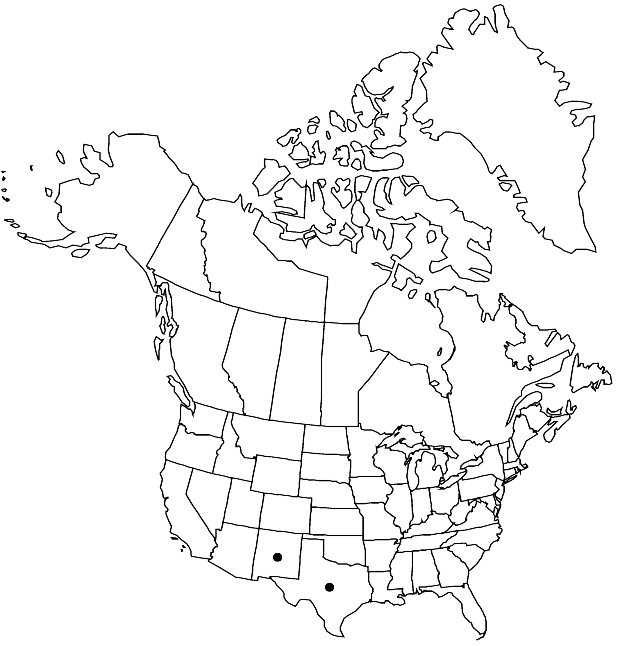Nerisyrenia camporum
Pittonia 4: 225. 1900.
Plants with woody caudex; moderately to densely pubescent or glabrate. Stems 1–6 dm, woody proximally, pubescent or glabrate with age. Cauline leaves: petiole 0.3–1.5 cm, often not sharply differentiated from blade, or (distal) sessile; blade usually obovate to spatulate or oblanceolate, rarely elliptic, 1–4 (–4.5) cm × (4–) 7–20 (–30) mm (not fleshy), base attenuate, margins dentate, repand, or entire, apex acute to obtuse. Racemes 3.5 dm. Fruiting pedicels (rarely recurved), (7–) 10–20 mm, densely pubescent. Flowers: sepals (spreading) oblong to oblong-lanceolate, 5–9 × 1–2 mm; petals obovate, (8–) 10–14 (–15) × 5–9 mm, claw (often flattened, margin dentate) to 2 mm; filaments 4.5–7.5 mm; anthers 2–3.5 mm. Fruits angustiseptate, 1.5–3 (–4) cm × 1.5–3 (–4) mm; ovules 40–100 per ovary; style (1.5–) 2–3.8 (–4.3) mm. Seeds 0.8–1.1 × 0.5–0.7 mm. 2n = 18, 19, 21, 22, 27, 32, 34, 36, 40, 41, 58.
Phenology: Flowering year-round, mostly Feb–Sep.
Habitat: Clay flats, gypseous clay, gravelly knolls, hillsides, sandy washes
Elevation: 200-1300 m
Distribution

N.Mex., Tex., Mexico (Chihuahua), Mexico (Coahuila), Mexico (Durango), Mexico (Nuevo León), Mexico (Tamaulipas), Mexico (Zacatecas)
Discussion
Selected References
None.
Lower Taxa
"elongated" is not a number."thick" is not a number."dm" is not declared as a valid unit of measurement for this property.